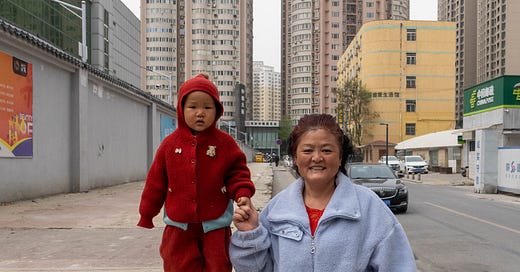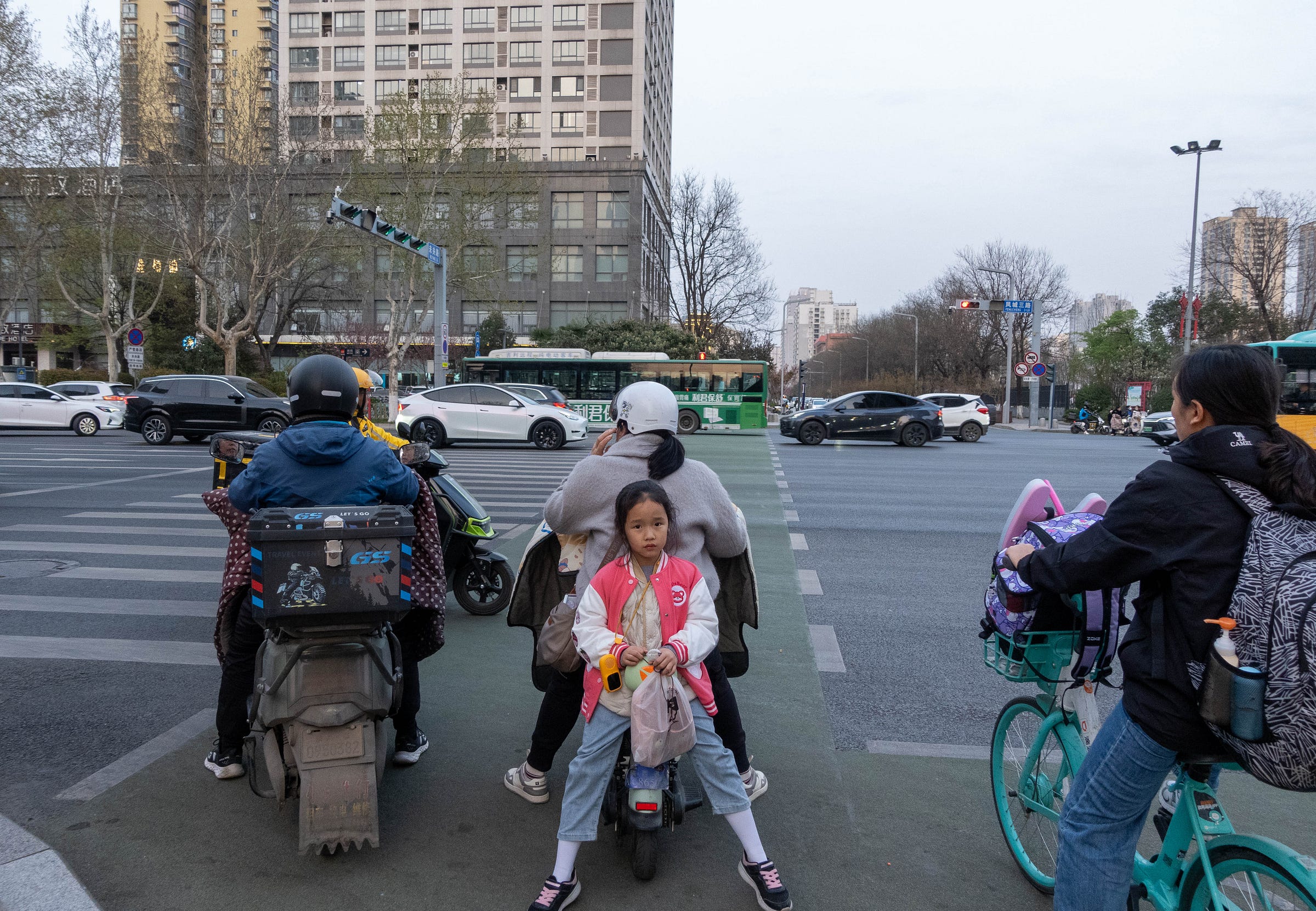(My three prior China pieces —Walking Shanghai, walking Beijing, and the more reflective piece, Beijing versus Shanghai.)
I arrived in Xi'an worried I wasn't going to be able to eat a proper dinner. My flight from Tashkent landed at nine thirty, which given my prior Chinese experience probably meant I'd get to my hotel as everything was closing.
But Xi'an is very different from Beijing and Shanghai. It is more relaxed, with less traffic and bureaucracy, and has an active street life that continues well past midnight, and—to my annoyance given my second-floor room—often remains aggressively active until four a.m.
The airport, like so much of Xi'an, is vast, immaculate, and sterile. On this particular Thursday night, it was also empty, so I was through security and in a cab1 within fifteen minutes, assisted by three border agents, all with printouts containing my information, who greeted me with broad smiles and a genuine interest in helping.
That was a marked contrast with how I left Tashkent, where I was detained for over an hour by aggressive border guards because the owner of the Airbnb I had stayed in failed to register me in some antiquated system—which after I figured out that was why they were mad at me, cost a crisp one hundred dollars to rectify. Well, two hundred if you include my handing a hundred to the cashless and frighted twenty-two year old American girl being escorted into the penalty box as I was leaving, and who couldn’t get through to the friend whose apartment she had crashed in2.
Between the competence of customs and the lack of traffic, I was in my room by ten thirty, but I was still worried I wouldn't find anything to eat given how rapidly and early Beijing and Shanghai had shut down. It was an absurd worry as I found out a minute later, walking a hundred yards down the street from my hotel, weaving my way through a sidewalk crowded with plastic tables of drunk hot-potters.
The street from the hotel to the end was about five hundred yards, cluttered with restaurants, shops, markets, stalls, and all spilled onto the sidewalk. This wasn't Beijing; it was more like Hanoi.
Overwhelmed with choice, I went into the first restaurant that looked the least crowded, but quickly had to step aside in the doorway as three friends rushed their plastered mate out, holding a plastic bag inches from his mouth. They managed to get him through the crowd, to the gutter, where he filled the bag with his vomit, which they then dumped into a storm drain, before they all came back inside to continue their dice drinking game. I counted over fifty empty pint bottles on and around their table, and only four men.
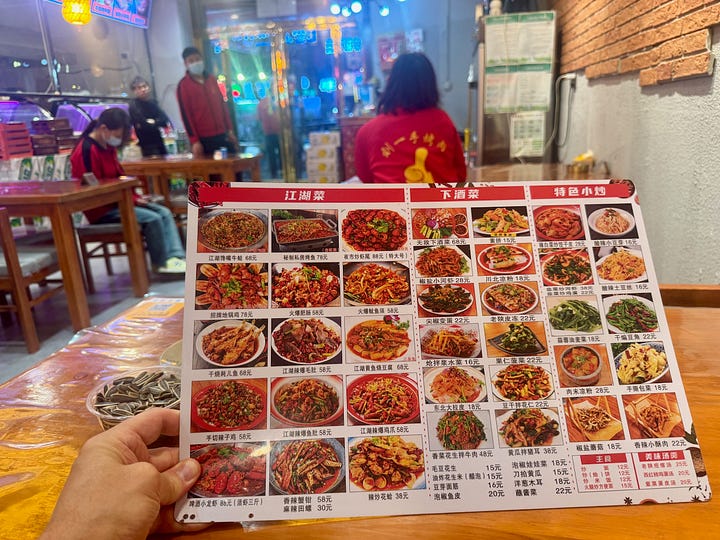
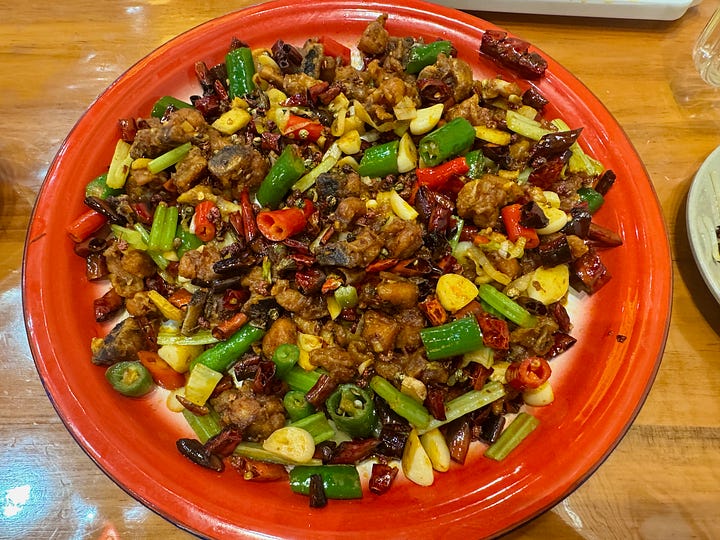
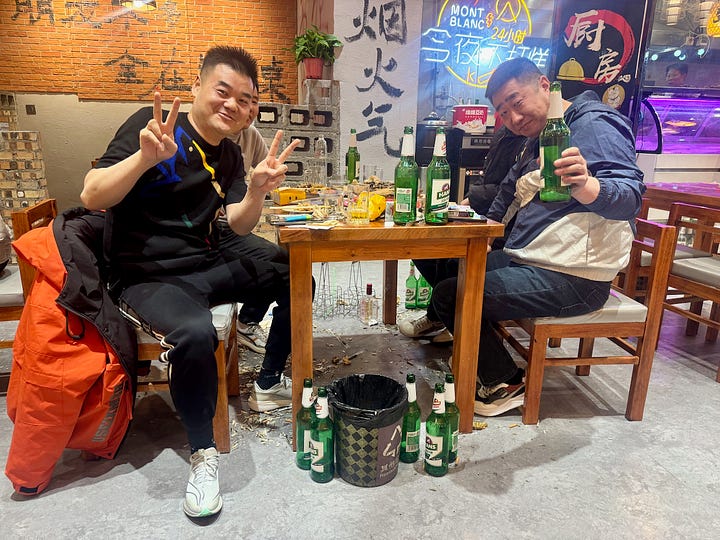

My waitress, an impossibly sweet teenager, hovered over me with a plastic picture menu, delighted to suggest all sorts of dishes, but she didn't speak any English other than a few disconnected words, and since my phone's cell service, which up until then had been perfect, randomly chose to blink out for fifteen minutes (something it continued to do my entire time in Xi'an), I had only a vague sense of what I was ordering.
So I guessed, pointed, and ten minutes later I got a pile of bean sprouts with lots of peppers, and an immense dish of diced chicken with somehow more peppers. I don't think I've had any dish as spicy as either in the last decade.
For that I blame the waitress, who kept standing over me as I was trying to make sense of the menu, and then asked via Google Translate if I was from Hollywood (Duh. Of course. Haven't you seen all my movies?) and did I like my food spicy. I had to say yes, since us movie stars can't disappoint their fans, and because I feared what would happen if I said no: Getting a dish so dull, so denuded of anything authentic, that I'd miss out on the "experience of travel.3"
That evening I was convinced I'd found my local, but I didn't ever go back because while I liked my waitress, I didn't like being stuck in her pepper jail, with no polite way to escape. I also wasn’t all that keen on exploring the menu of “Greedy Bullfrog Stew” or “Spicy Fish Belly,” since I long ago tapped out on eating odd things for the sake of eating odd things. Anyway, as I quickly learned during my walk the next day, my block wasn't unique, and Xi'an, unlike Beijing and Shanghai, had more eating options and more cuisines available than I could even begin to catalogue.
That isn't to say Xi'an is an entirely different city. It is very much a Chinese city, certainly at the built level. The overall layout is similar to Beijing, a highly engineered, roughly circular city with a historic "preserved" core that becomes ever more modern as you walk towards the edges, since it's grown outwardly one beltway after another. It also has the same chunky density, the same massive scale, and the same repetition.
That means at the macro level, walking in Xi'an is very similar to walking in Beijing, so rather than re-write the same thing, I'll quote myself,
Beijing… is on a scale that makes US and European cities seem lilliputian. There are five expressway rings delineating and ordering its six-thousand square miles, and as you walk into the center, passing under each, little changes. The density doesn’t grow, the urban landscape doesn’t change dramatically, instead a fifteen-mile walk from the end of a metro line towards … the center, is like a cheap cartoon with a repeating loop background of apartment towers, malls, and the occasional massive modern edifice dedicated to the arts, the past, or some government service. Beijing’s density is chunky, a normal city expanded by one and a half, with absurdly wide roads, apartment complexes set far back, and oversized parks, but with the individual living spaces (the malls, the apartments, the stores) shrunk by an equal amount, so it feels both empty and yet crowded. It has the sprawl of Dallas, but dappled with archipelagos of Manhattan density.
In Xi'an’s case, the repetition plays out in one-square-mile chunks, which is the city's basic building block. Each chunk features four-mile-long commercial edges with malls, metro stops, or shopping complexes at the corners, and an interior composed of residential apartment complexes of thirty to fifty-story buildings. These complexes function as walled communities of approximately ten towers each, with strictly controlled entry points. Adjacent complexes, even within the same block, can only be accessed by exiting to the commercial edges and re-entering through separate entrances. This means there are few to no intersecting streets and pedestrian alleys, forcing people to walk along the perimeter to get from one side of a "block" to another.

